A town that does not exist (visual walk 31 photos)
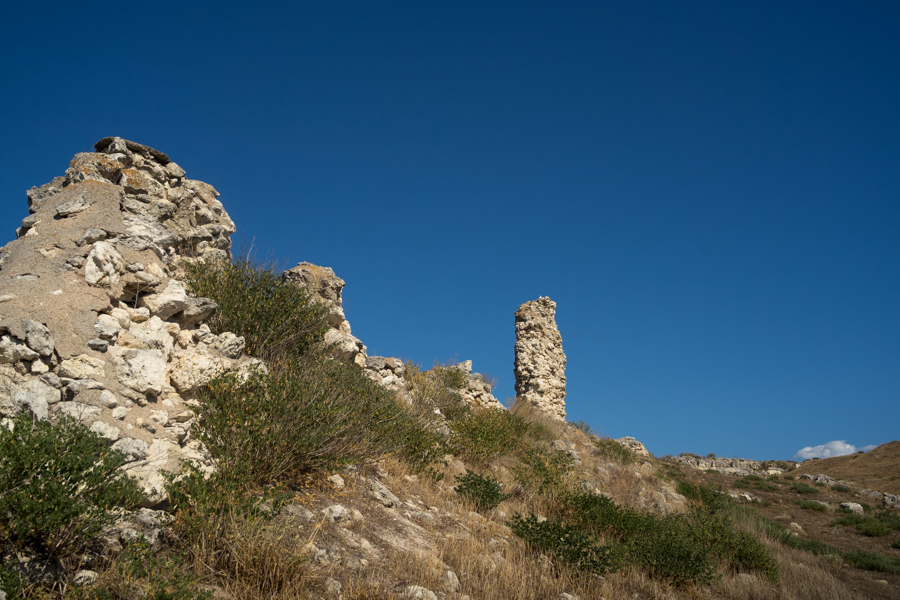
Today we will walk along trails that are not taken by tourists. This site has not been excavated and is not found in most of the selfie photos. I continue talking about Khersonesos, a city that does not exist.
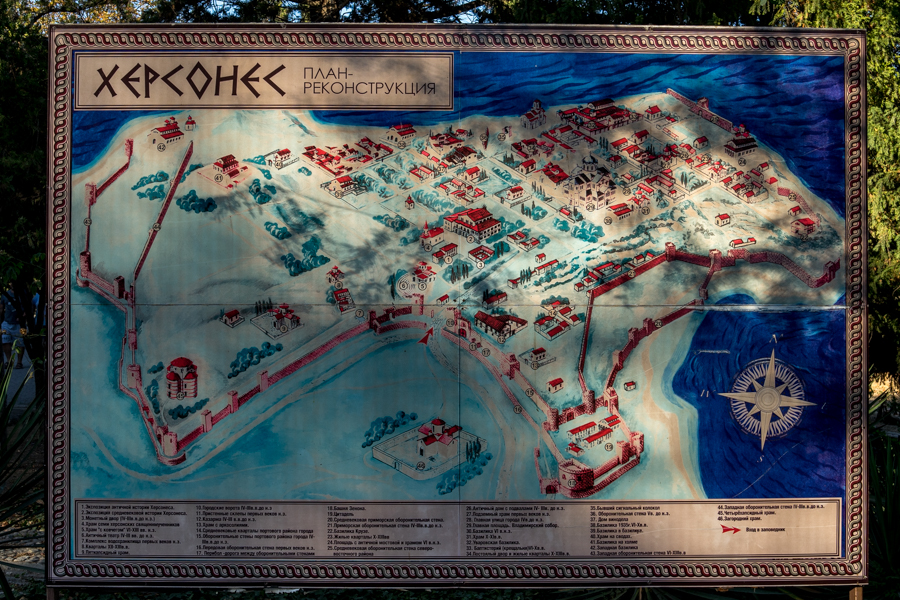
This non-city was once located on a cape between two bays, Karantinnaya (on the plan on the right) and Pesochnaya. We can say that it was located on one of the hills of modern Sevastopol.
The city beach is now located in Sandy Bay.
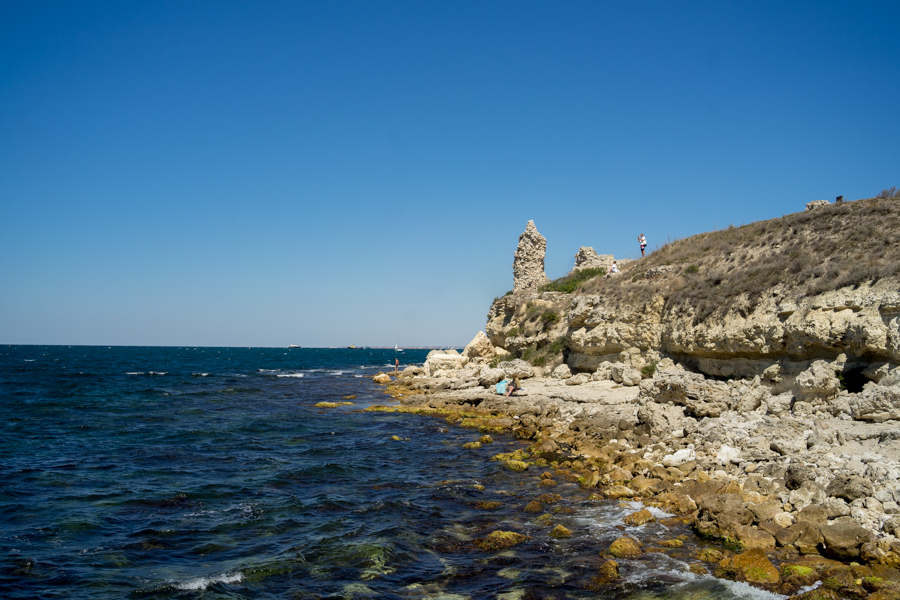
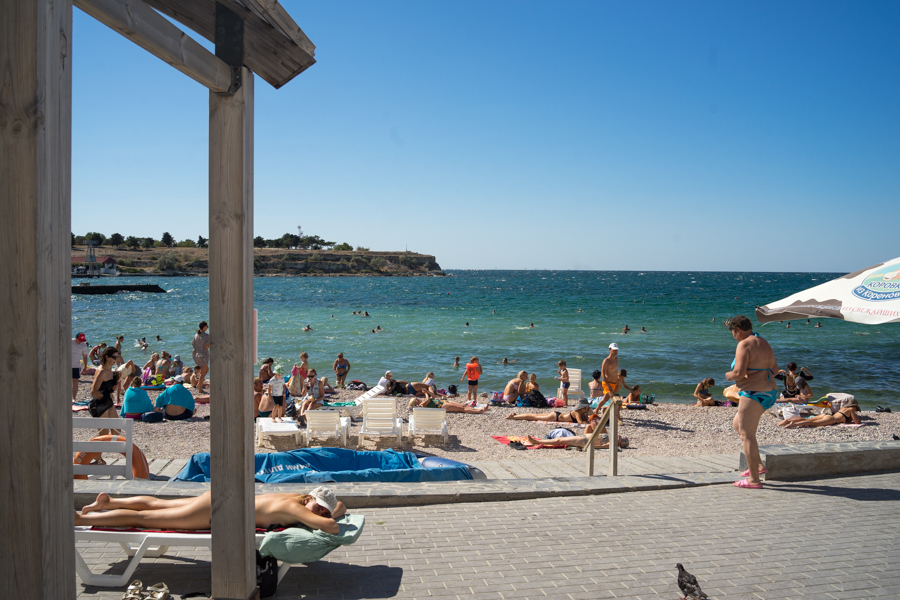
There are several berths in the Karantinnaya Bay. One of them belongs to the naval diving school in which I had the honor to undergo summer cadet practice in the 80s of the last century.
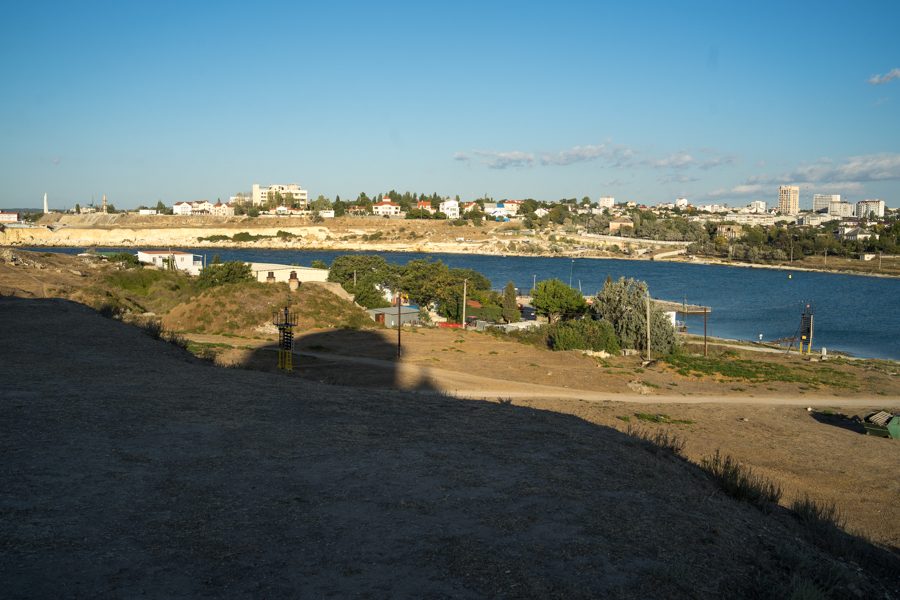
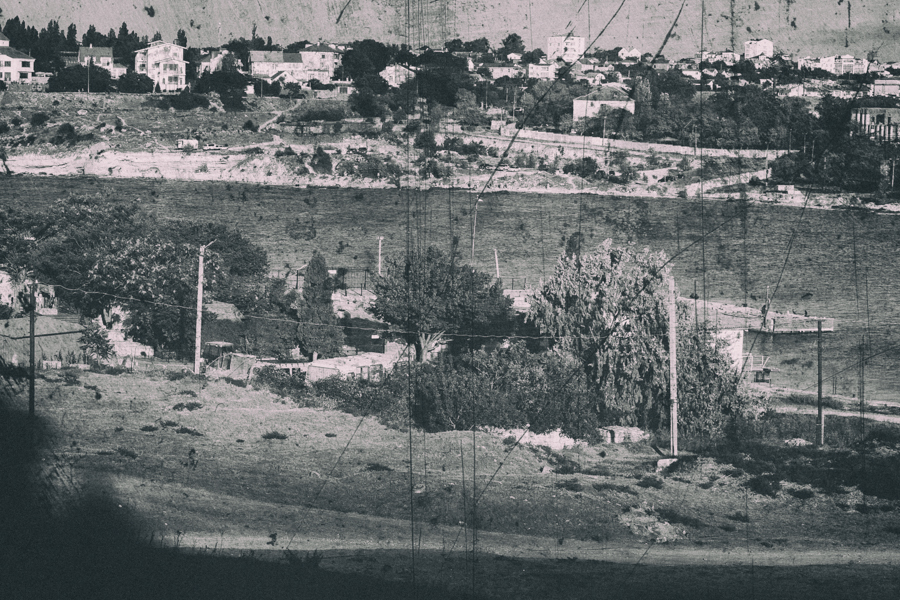
Yes, I am such an ancient diver. But this is not the point now. A more or less excavated part of Khersonesos is concentrated near the Karantinnaya Bay. There is the main entrance to the museum, buses take tourists there and organized excursions start there. They are shown temples and excavations. They tell tales and legends and all this is incredibly interesting. But I have not seen a single excursion that would be in the part adjacent to Pesochnaya Bay. There is also a checkpoint and you will also be sold an entrance ticket. If you are a desperate wild tourist, you can simply try to climb over a 2-2.5 meter high stone wall.
We took the legal path.
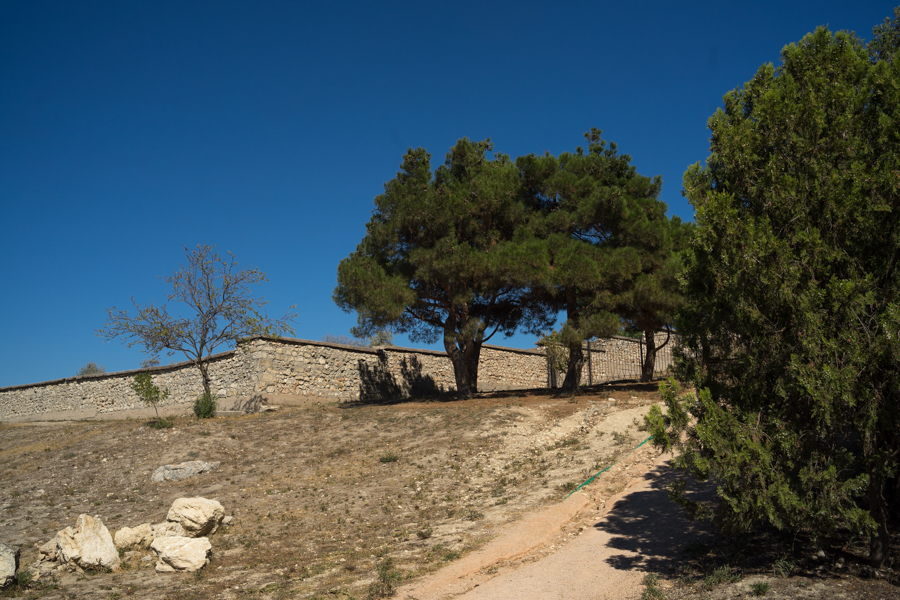
This is the beginning of the trail and that stone wall. The trail starts right from the beach and goes up the hill. By the way, there was no wall here before. More precisely, this is not a wall, it is a fence. I hate fences of any kind. From stone to cast iron. But now it has become fashionable. Okay, let's not talk about sad things.
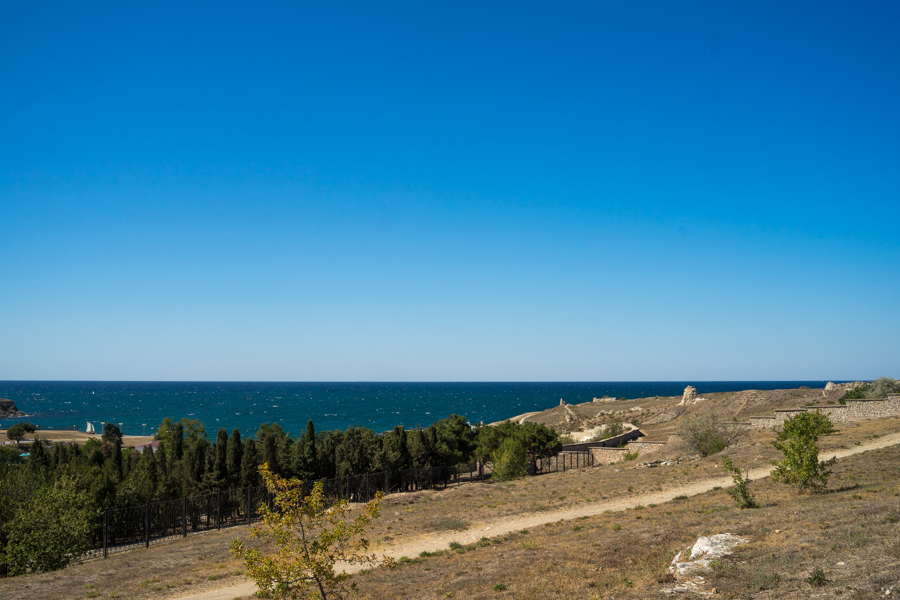
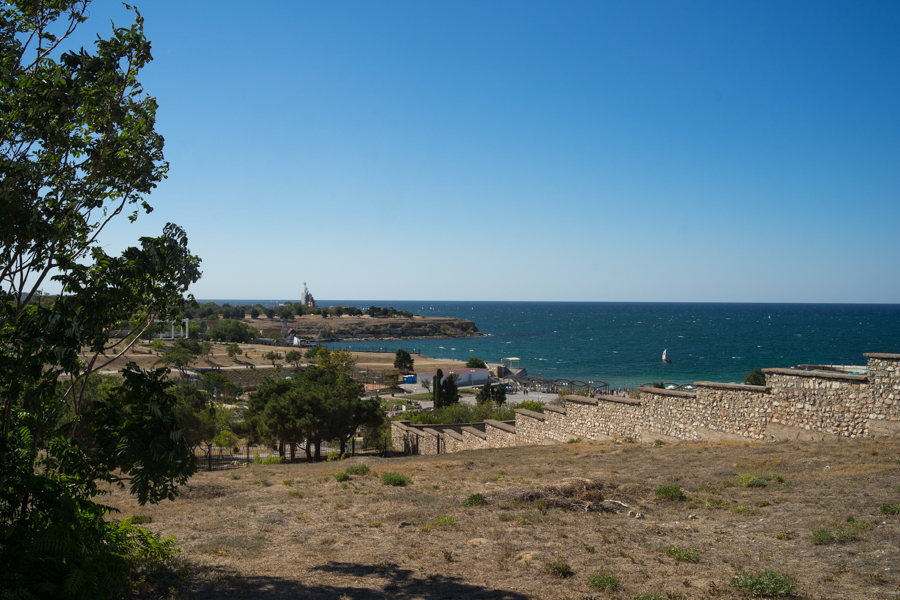
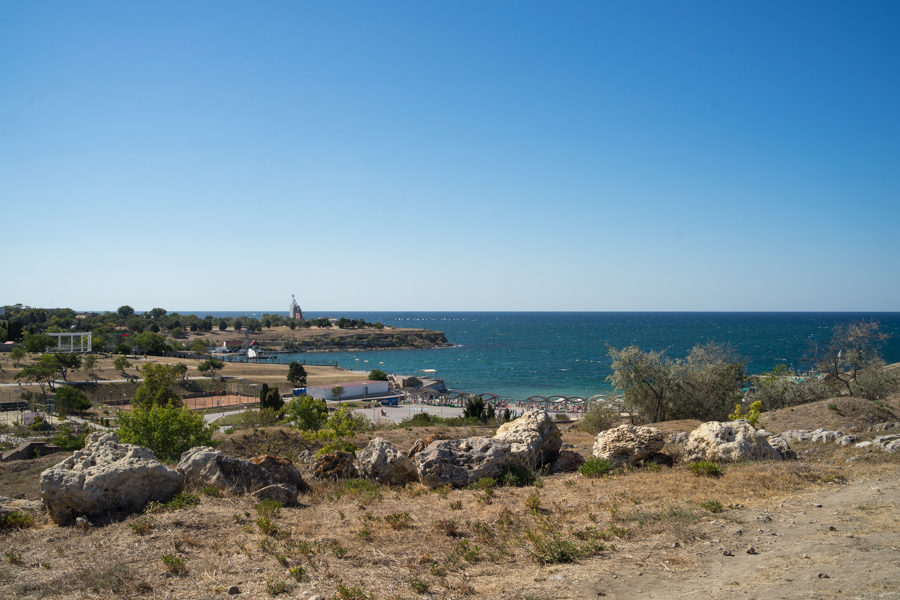
We still walk towards the hole in the fence, where they sell entrance tickets and look back at the beach. In fact, those who are smarter in this heat swim in the sea, lie on sun loungers and drink cold drinks. But such a vacation is not for us.
Having overcome the fence we find ourselves on the open part of the hill. I understand why there are no excursions here. You have to walk for a long time in the heat, and there is nothing special to show. It seems that archaeologists did not look here. Or everything was covered up here again. Fortunately, something survived. And this is something that deserves attention.
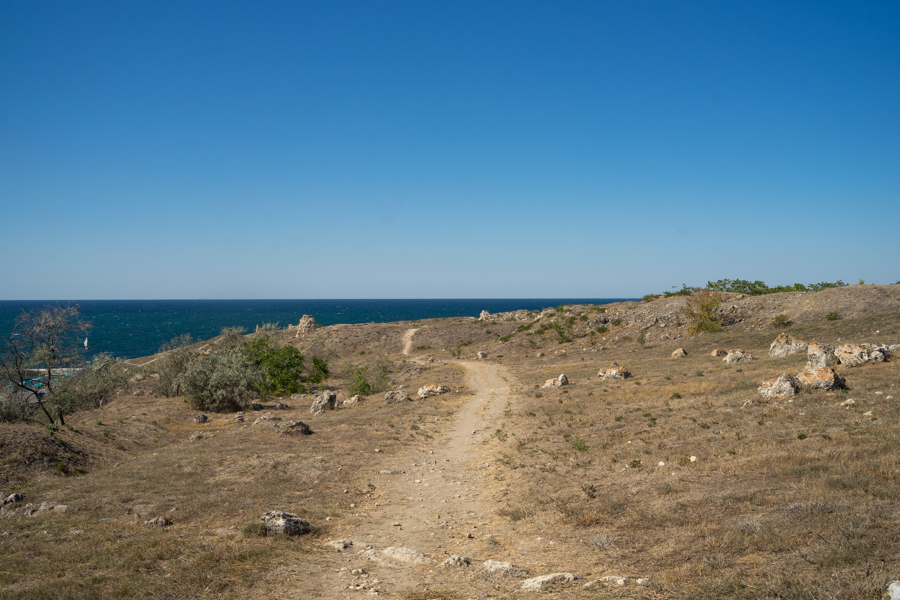
One of the trails meanders along the seashore and is the most picturesque. We will go on it. So less heat and there is a refreshing breeze from the sea. True, I had to tie my hat with a string to my head, but I was not offended by the wind. I was grateful to him.
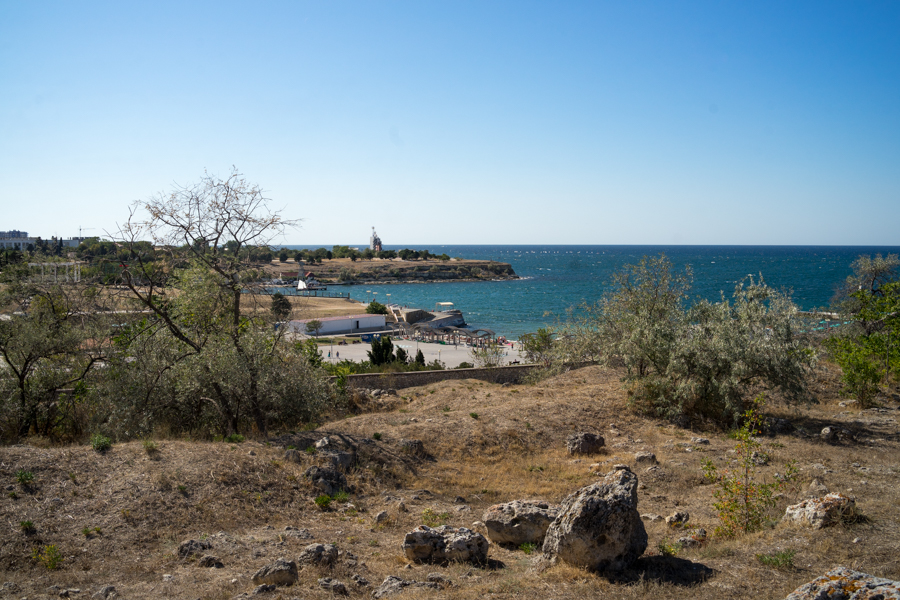
The beach is still visible, but now it is out of focus.
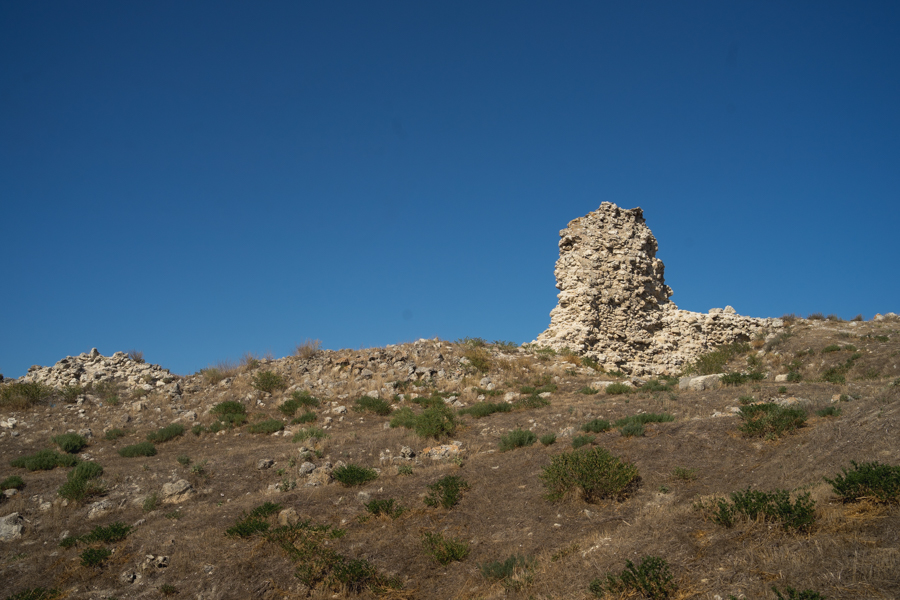

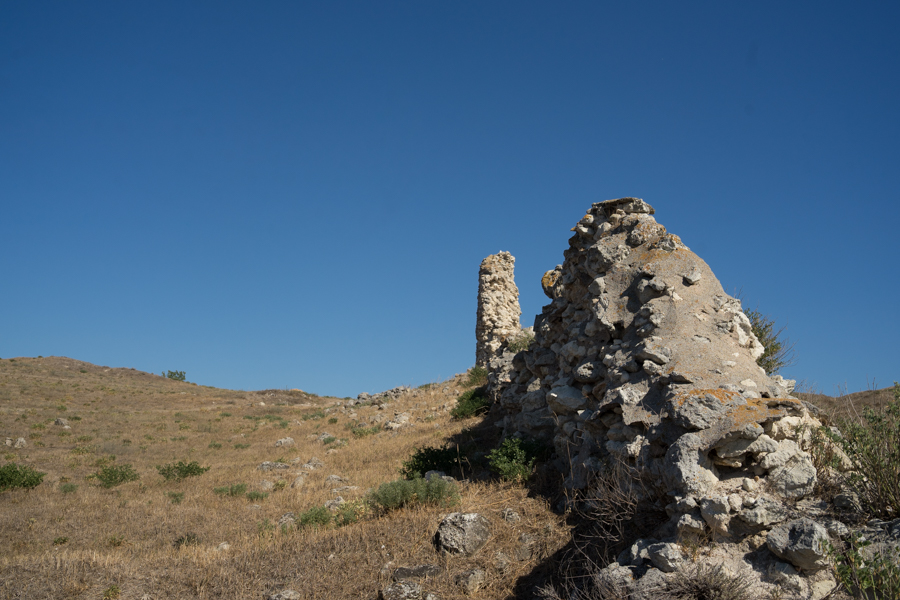

These are the remains of the fortress wall. Apparently once it was the outer wall that surrounded the city. On the reconstruction scheme, it is designated as the western defensive wall (43). Little remains of the wall, but in any case its direction is visible. Antiquity emanates from these walls.
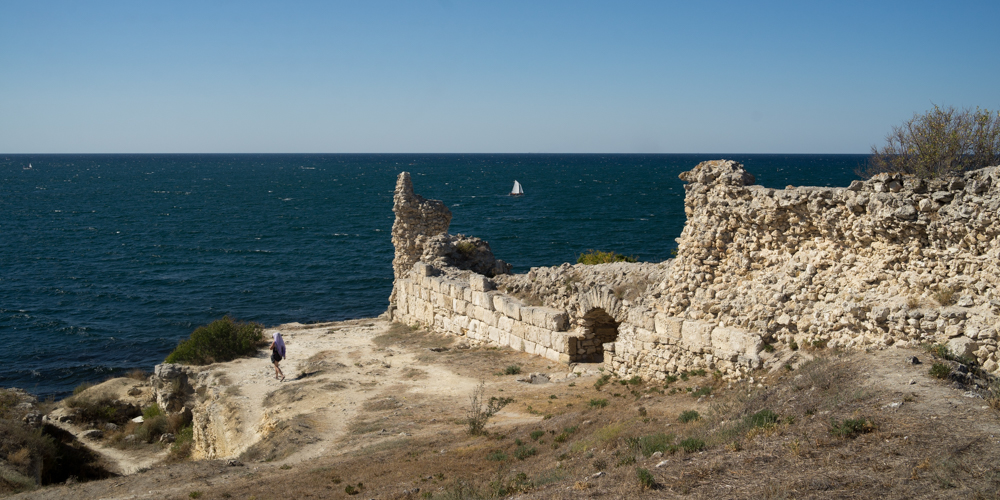

One of the entrances is not the widest. Maybe it was the entrance directly to some building, judging by the size and shape of the masonry.
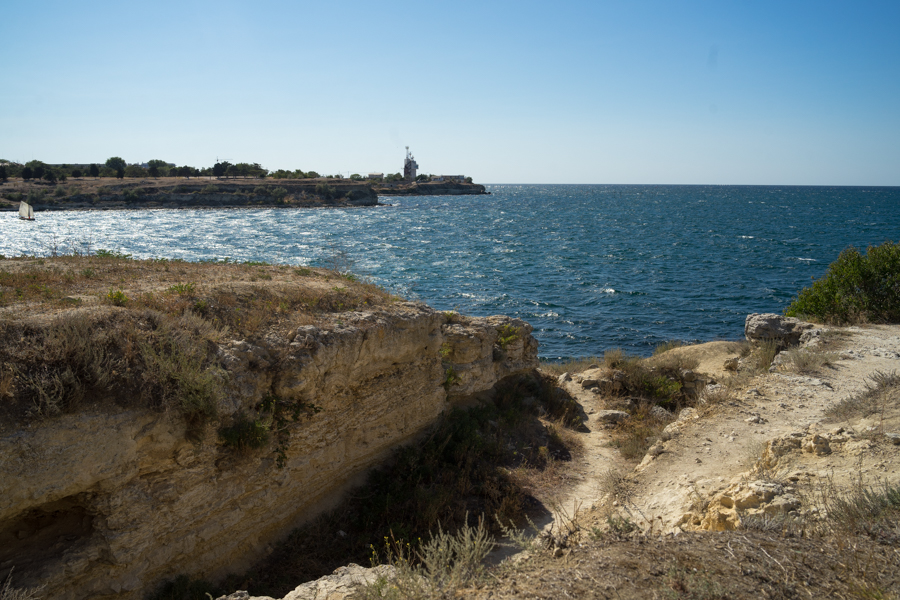
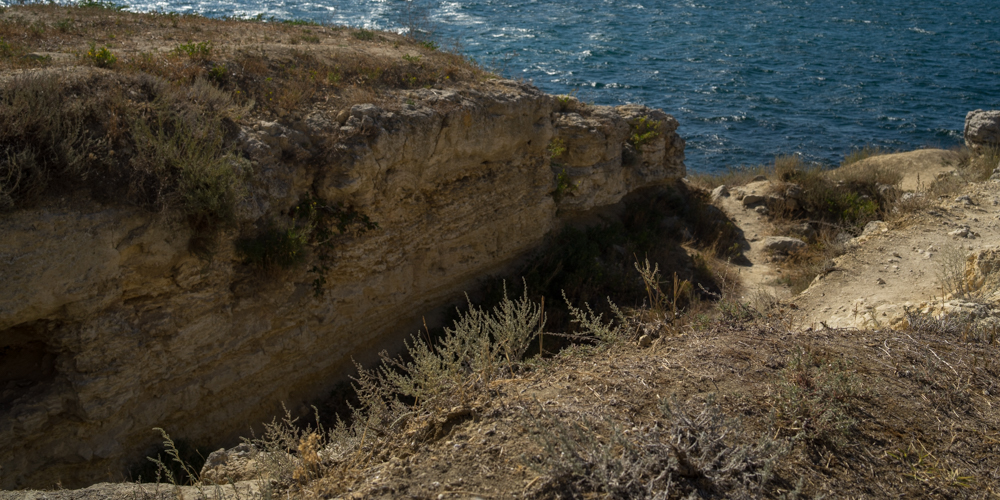
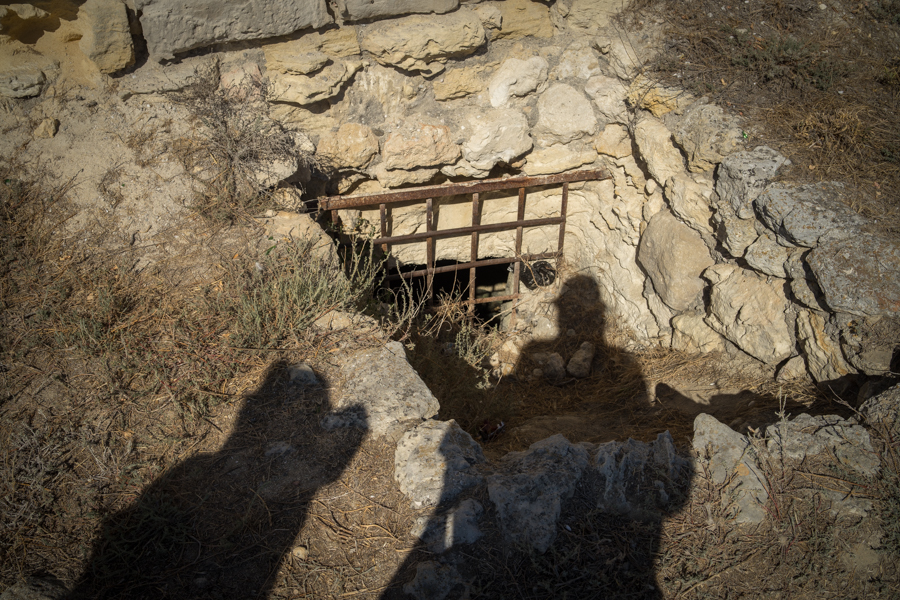
There is something strange just off the outside of the wall. I read in the literature that there is an underground temple of early Christians on the territory of Chersonesos. They were once persecuted by the Romans and hid their temples. But there they talked about an underground temple in the eastern part of the polis (27 in the diagram), and here the western part is also behind the wall. Here, too, is clearly something underground. But maybe this building is purely domestic in nature. We need to bring a psychic there and let him work.
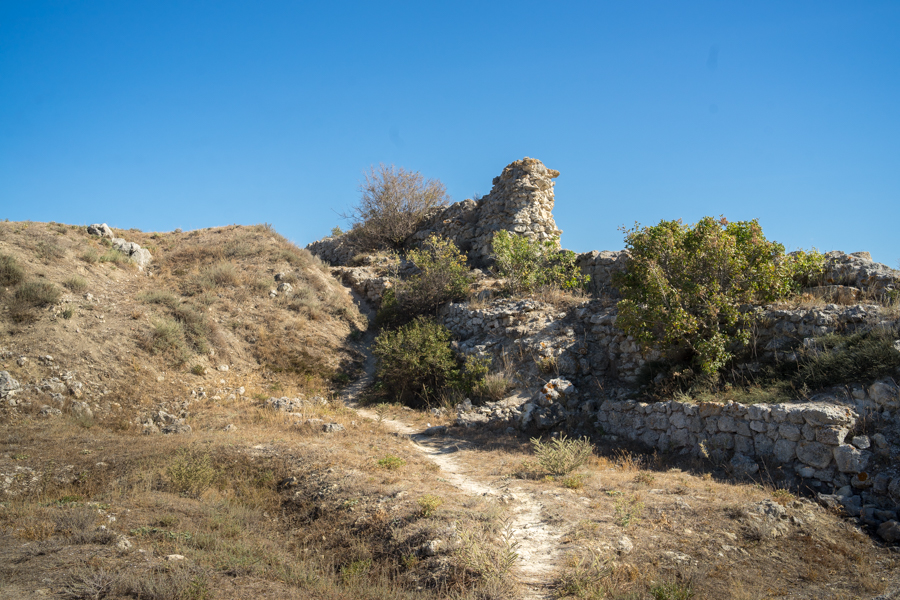
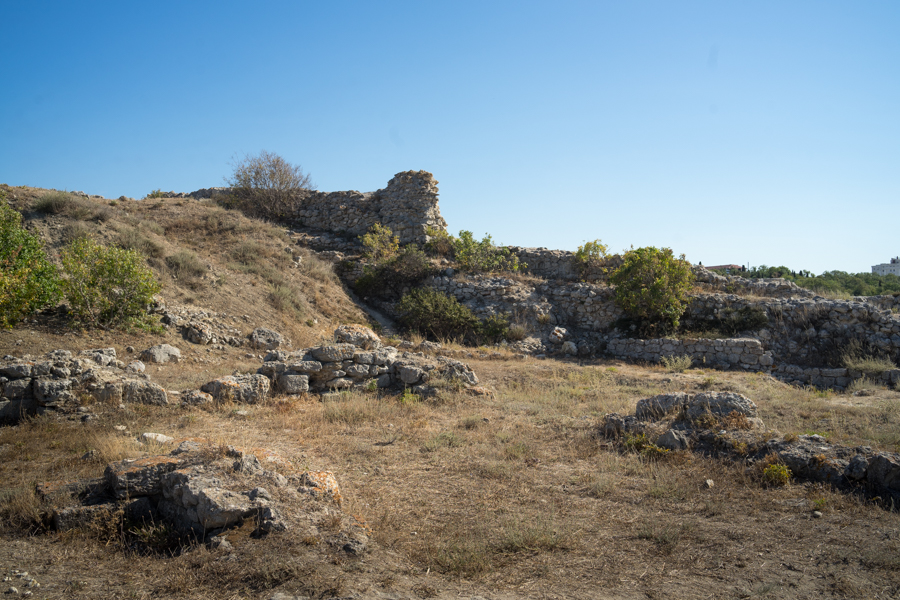
Where dry grass now bristles, there is something under a layer of earth. I think there is still a lot of work to do for archaeologists. I wonder if this will happen someday?
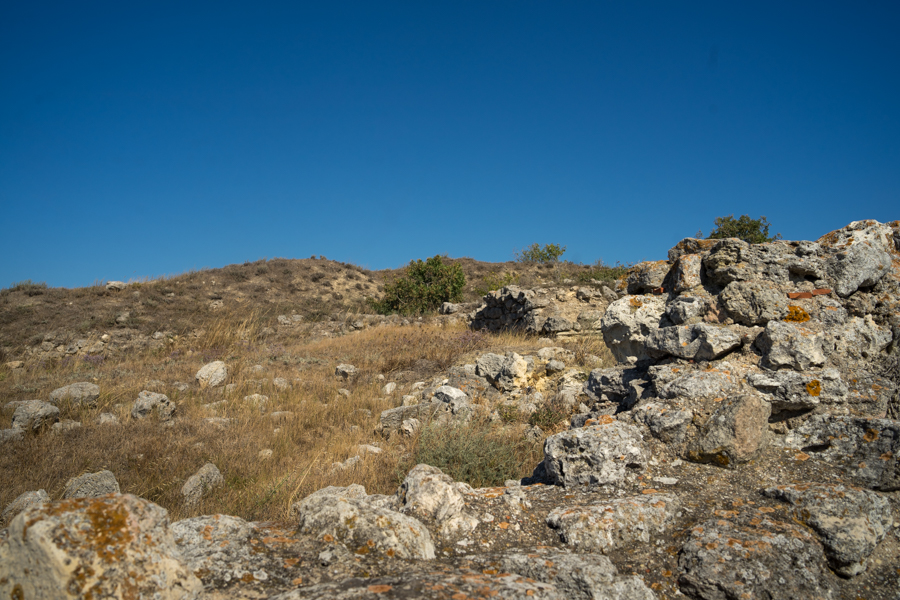

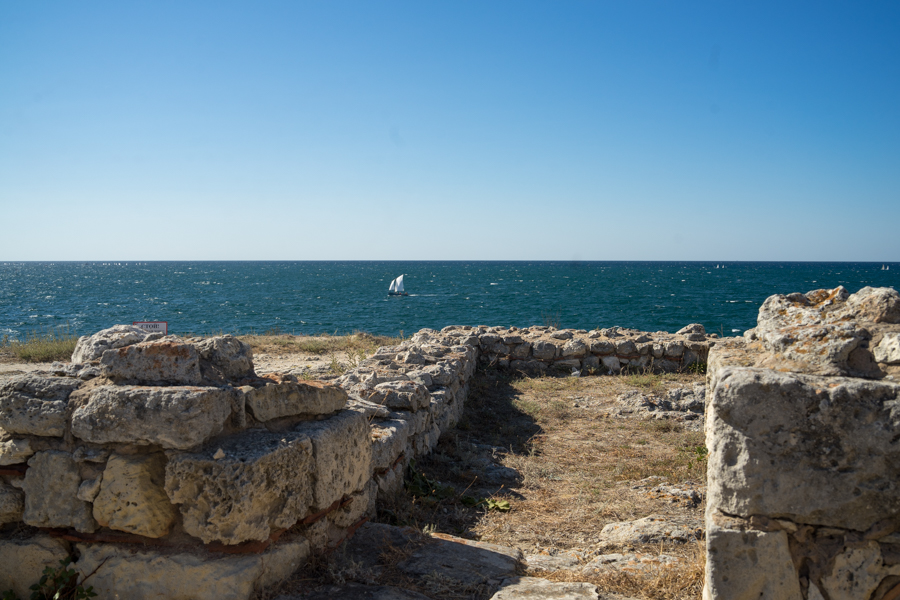
Did I already tell you what is incredibly beautiful here? Probably he did, but you yourself can see it in the photographs.
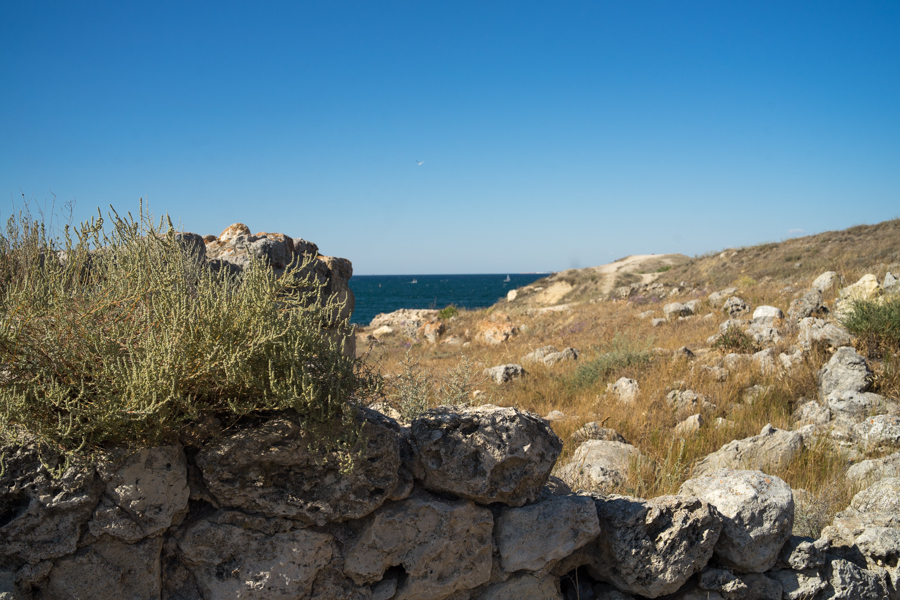
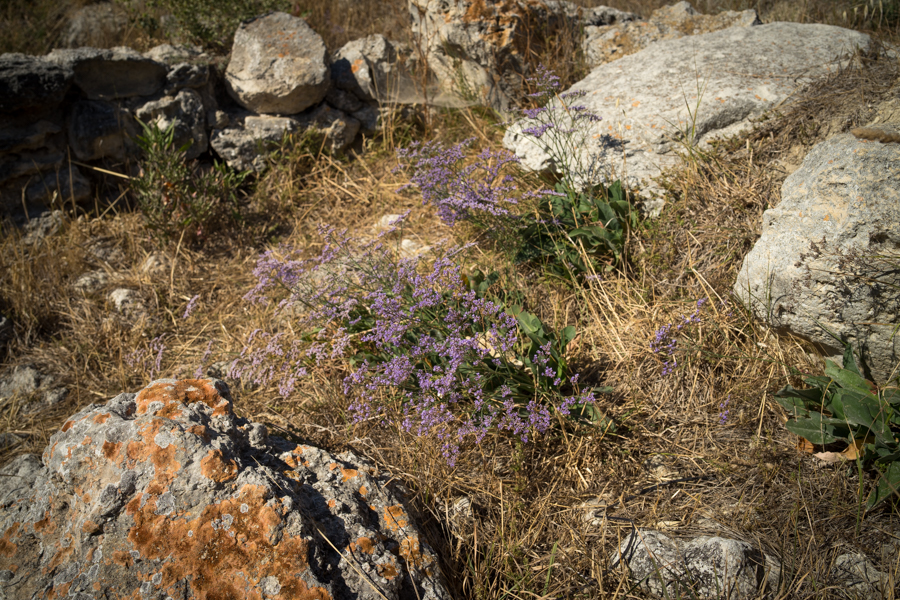
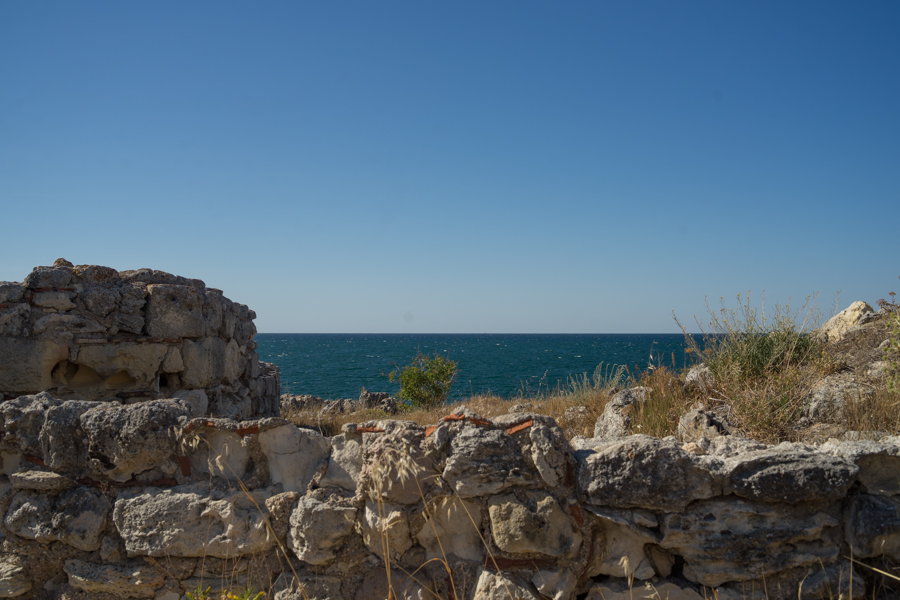

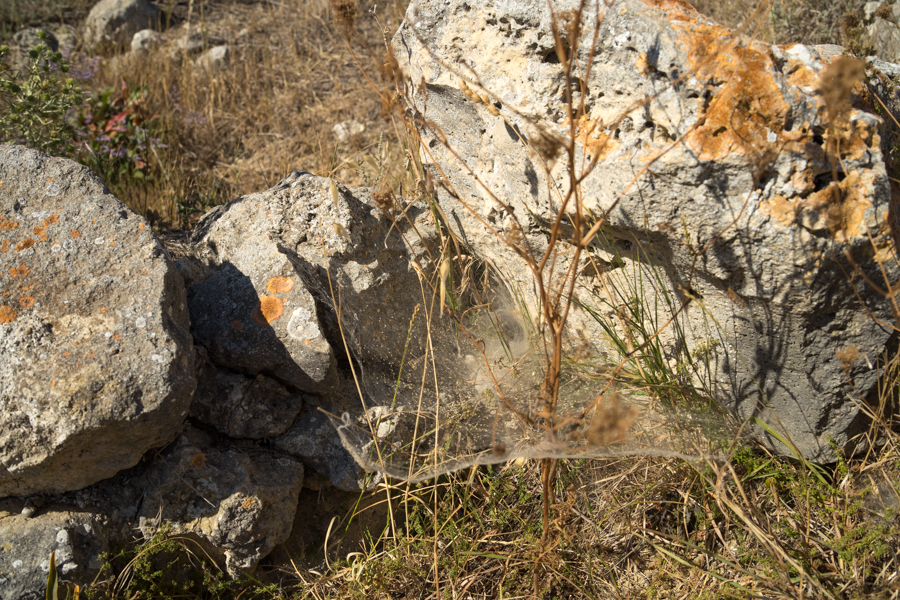
This is not the most comfortable place for plants. But they don't complain. They live. A good example for people.
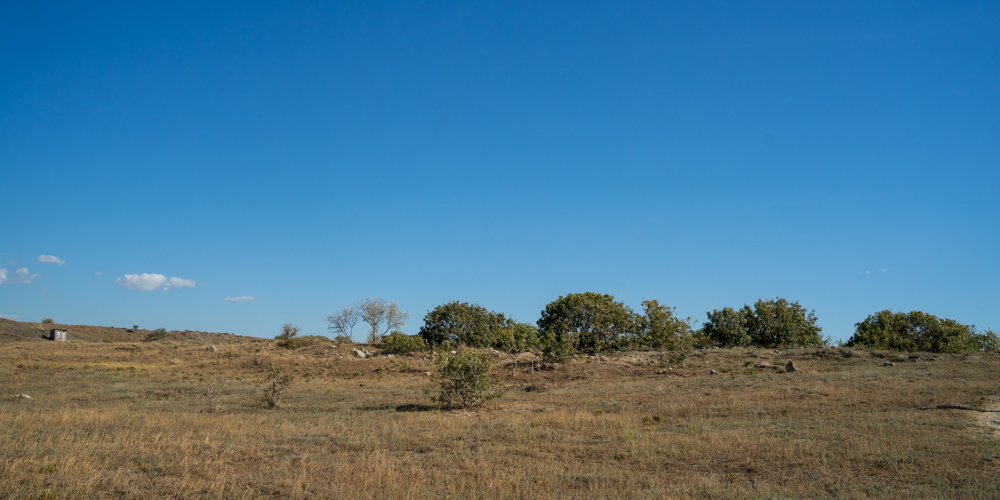
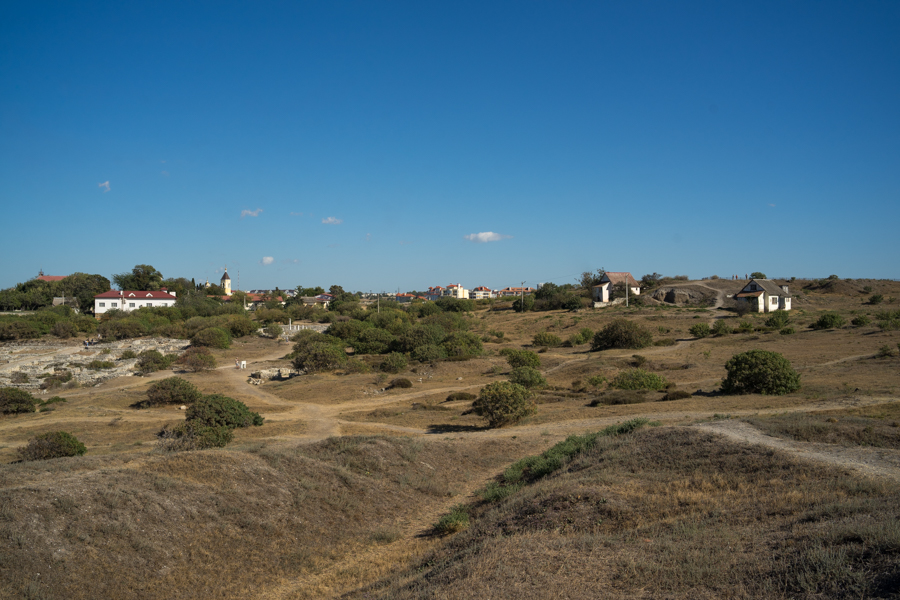
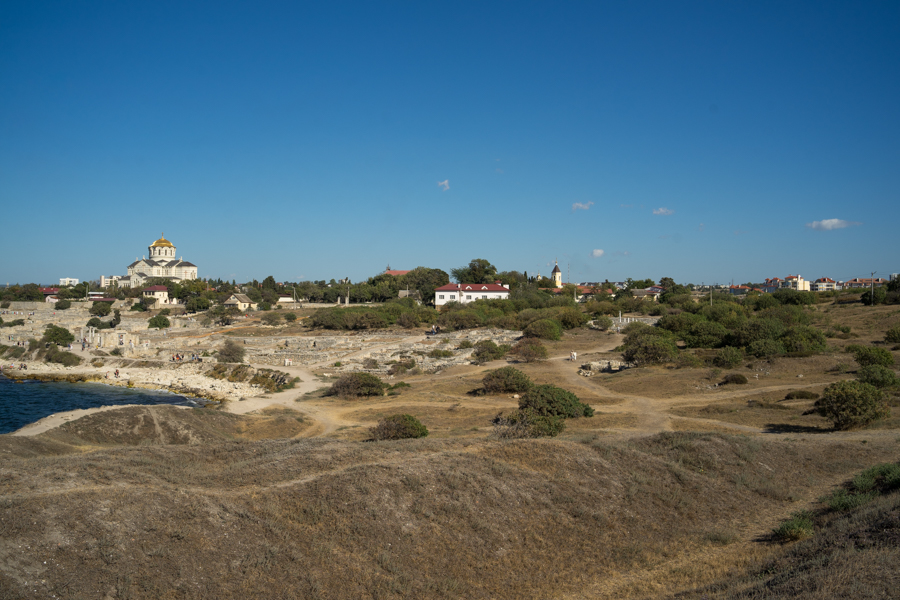
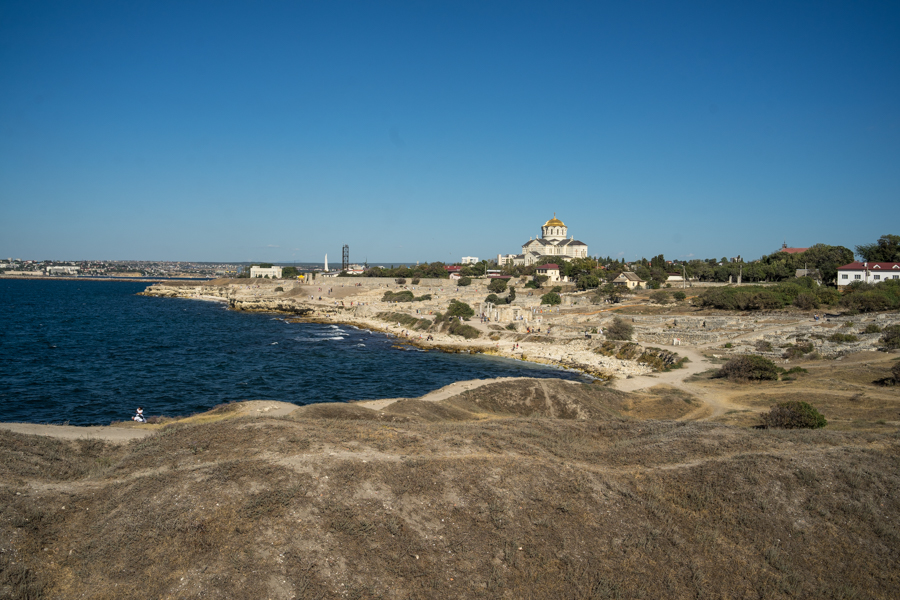
Let's move our head from right to left. Our gaze from a multitude of uninhabited hills and paths glides towards the sea and, possibly, rests against a temple that rises above the horizon. We haven’t been there yet and I think it’s time to go there. But this is not this time.

| ▽ | ▽ |
|---|---|
| Camera | Sony A7М2 |
| Lens | Samyang 1.4 35 |
| Location | Russia |
| Post production | in LR |
Manual processing in Lightroom
From Russia with Love


Du wurdest als Member von @investinthefutur gevotet!
Dazu noch ein kleines !BEER & VOIN-Token
Cheers! аnd !BEER
!invest_vote
@bambuka denkt du hast ein Vote durch @investinthefutur verdient!
@bambuka thinks you have earned a vote of @investinthefutur !
View or trade
BEER.Hey @investinthefutur, here is a little bit of
BEERfrom @bambuka for you. Enjoy it!Learn how to earn FREE BEER each day by staking your
BEER.View or trade
BEER.Hey @bambuka, here is a little bit of
BEERfrom @investinthefutur for you. Enjoy it!Learn how to earn FREE BEER each day by staking your
BEER.That was a good walk. Thanks for doing all the footwork.
If I were still working with my head ...
But the head has an excuse, it worked with my hat and argued with the wind: D
Thanks for stopping by :-)
LOL
You sir are one funny guy.
Actually there are two of me, but I hardly know the second one LoL
Sometimes neighbors can be like that.
LoL
@tipu curate
Upvoted 👌 (Mana: 24/48) Liquid rewards.
Thanks so much @homesteadlt and @tipu !
The ruins are the evidence of long history they might have witnessed.
That's good that you got to visit there.
Keep posting and keep flourishing!
I bought myself a new toy yesterday. Helios-40-2 lens of the 1978 model. If you could see everything that he shot during his long life ... It would be at least interesting :-)
Thanks for stopping by :-)
Glad to see you and thank you for your kind words!
An interesting exploration of Khersonesos indeed @bambuka! In that archaeological site, do you have an idea what the most common type of stone was used for the construction of the walls, fortresses, and other old buildings?
It is believed that the so-called Inkerman limestone was used. But the local limestone in Crimea is also of a denser rock - the Krymbalsky stone.
But all these are limestones of local origin.
Marble, of course, was transported by sea))
Считается, что использовался так называемый инкерманский известняк. Но местный известняк в Крыму бывает и более плотной породы - крымбальский камень.
Но всё это известняки местного происхождения
Мрамор, конечно, везли морем))
Yes, it's always a practical decision and solution to use local stones. I find those stone names quite interesting.
I don’t remember exactly the name, but one of the limestones is identical to the limestones that were used for the construction of buildings and structures in ancient Egypt.
Hello @bambuka, we're just dropping by to congratulate you on your excellent storytelling while taking us on a visual walk.
The Architecture+Design Community is an Active Member of the OCD Communities Incubation Program
Find out more about the community comprehensive guidelines
I am glad that I have grateful readers. I love traveling and taking pictures and am happy to share my impressions.
Thanks for stopping by :-)
Glad to see you and thank you for your kind words and support!